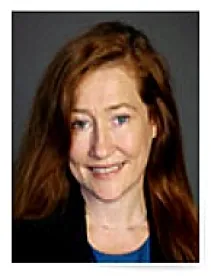In a Title VII harassment case, an important preliminary question is whether the individual accused of harassment is the employee's supervisor, in which case the employer is strictly liable for any harassing conduct that results in a negative employment action, or whether the accused is a non-supervisory co-worker, in which case the employer can avail itself of certain defenses such as implementation of an effective anti-harassment policy and complaint procedure. On June 24, 2013, the U.S. Supreme Court decided Vance v. Ball State University, No. 11-556, 570 U. S. __ (2013), which answers the important question of when an employee will be considered a "supervisor" for purposes of assessing Title VII liability for harassment.
Alleged Racial Harassment By a Supervisor
Maetta Vance (Vance), who is African-American, had worked for Ball State University (BSU) since 1989. Originally hired as a substitute server, she was promoted in 1991 to a part-time catering assistant position, and in 2007 became a full-time catering assistant. Vance worked with BSU employee, Saundra Davis (Davis), a Caucasian catering specialist. During her employment, Vance had asserted a number of complaints of race discrimination and retaliation, most of which are not relevant to the case.
The district court entered summary judgment in favor of BSU. The court explained that BSU could not be held vicariously liable for Davis' alleged racial harassment because Davis was not Vance's supervisor under applicable court precedent. The court further held that BSU could not be liable in negligence because it responded reasonably to the incidents of which it had knowledge. The Seventh Circuit affirmed summary judgment for BSU. Vance appealed to the U.S. Supreme Court.
Court Adopts Narrower Definition of Supervisor
Under established Supreme Court precedent in Burlington Industries, Inc. v. Ellerth, 524 U. S. 742 (1998) and Faragher v. Boca Raton, 524 U. S. 775 (1998), an employer is directly liable for an employee's unlawful harassment only if the employee can show that the employer was negligent with respect to the offensive behavior. However, different rules apply when the harassing employee is the employee's supervisor. In that case, an employer may be vicariously liable, or strictly liable, for an employee's creation of a hostile work environment. Therefore, whether an alleged harasser is a "supervisor" or a co-worker is a critical question, about which courts around the country have disagreed. Some courts, including the First, Seventh, and Eighth Circuits, as well as lower courts in Arkansas, Illinois, Indiana, Iowa, Maine, Massachusetts, Minnesota, Missouri, Nebraska, New Hampshire, North Dakota, Rhode Island, South Dakota and Wisconsin, have adopted a narrower view of a "supervisor," and require an employee to have the power to implement such decisions as hiring, firing, demotions, promotions and transfers, to be considered a supervisor for purposes of Title VII liability. Other courts have taken a broader approach, such as that suggested by the EEOC's Enforcement Guidance, which vests supervisory status in employees with authority "of sufficient magnitude so as to assist the harasser explicitly or implicitly in carrying out the harassment." Arguably, this definition can include a broader group of individuals such as those who exercise direction over an employee's daily work assignments.
The Supreme Court rejected this broader approach, and held that for purposes of imposing vicarious liability on an employer for unlawful harassment, a supervisor must be empowered to take tangible employment actions against the employee, or, in other words, to effect a "significant change in employment status, such as hiring, firing, failing to promote, reassignment with significantly different responsibilities, or a decision causing a significant change in benefits."
Here, Vance claimed that Davis at times gave instruction to Vance and other kitchen workers, and that Davis' job description vested her with certain leadership. In reality, the evidence showed that the chef, not Davis, assigned Vance's daily tasks, which were given to Vance on "prep lists." Occasionally the prep lists were given to Vance by Davis. Because Davis did not have the authority to hire, fire, demote, promote, transfer or discipline Vance — which was conceded by Vance — Davis was not a supervisor capable of subjecting BSU to vicarious liability.
How Employers Can Benefit From This Ruling
This decision refocuses attention on the importance of job descriptions, and clearly delineated and adhered-to roles in the supervisory chain of command. Indeed, according to the Court, under its newly enunciated definition adopted in this case, the question of supervisor status often can be decided on a summary judgment motion prior to trial. Employers that want to benefit from this ruling should consider reviewing documentation such as job descriptions of first line supervisors or leads to ensure the authority described in the description — and indeed, exercised in fact — is no broader than appropriate for the position. Following this Supreme Court decision, well-drafted job descriptions and consistent decision-making protocols and practices will be powerful tools in the defense of harassment cases where supervisor status is called into question.



 />i
/>i

